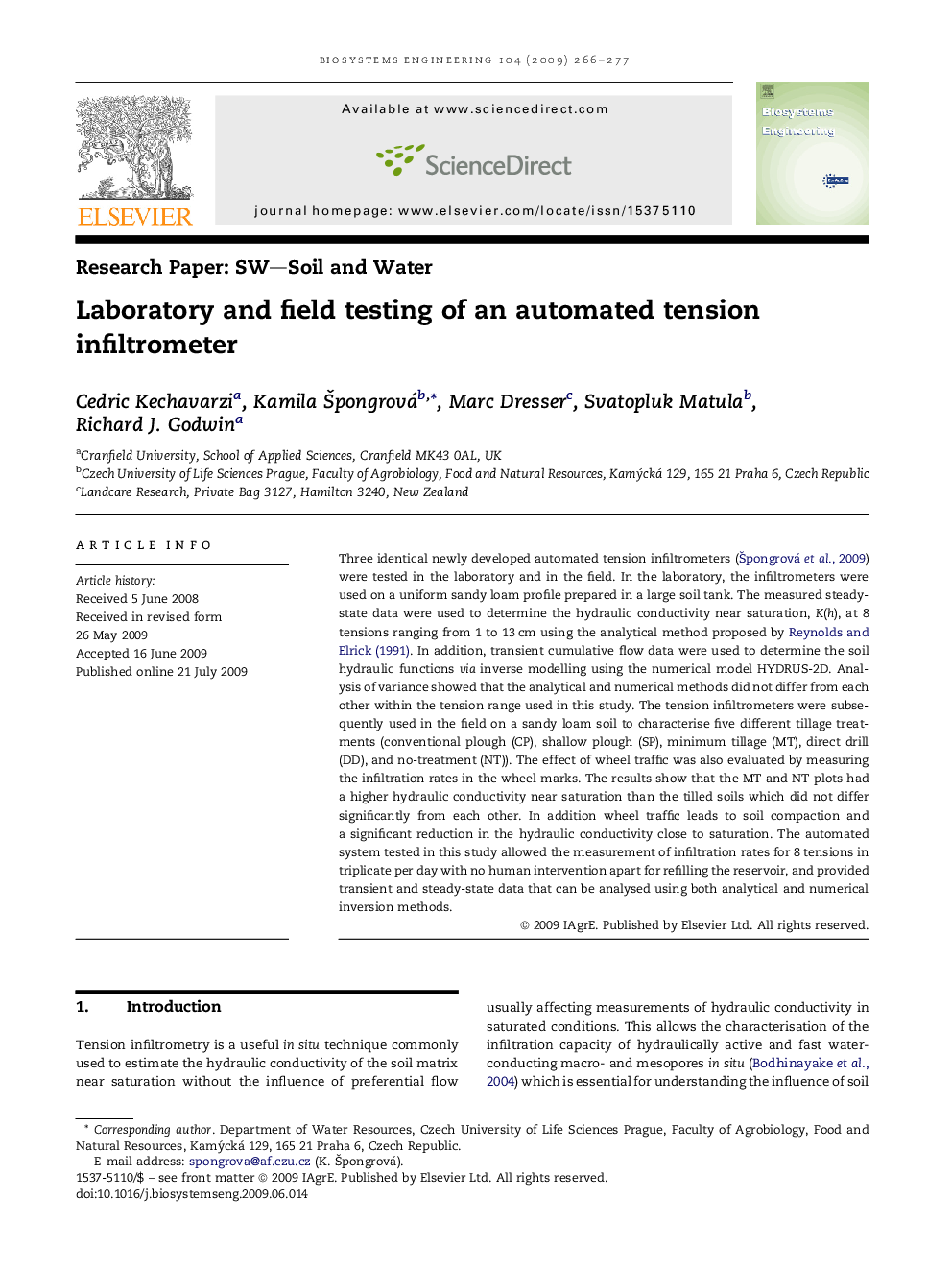| Article ID | Journal | Published Year | Pages | File Type |
|---|---|---|---|---|
| 1712226 | Biosystems Engineering | 2009 | 12 Pages |
Three identical newly developed automated tension infiltrometers (Špongrová et al., 2009) were tested in the laboratory and in the field. In the laboratory, the infiltrometers were used on a uniform sandy loam profile prepared in a large soil tank. The measured steady-state data were used to determine the hydraulic conductivity near saturation, K(h), at 8 tensions ranging from 1 to 13 cm using the analytical method proposed by Reynolds and Elrick (1991). In addition, transient cumulative flow data were used to determine the soil hydraulic functions via inverse modelling using the numerical model HYDRUS-2D. Analysis of variance showed that the analytical and numerical methods did not differ from each other within the tension range used in this study. The tension infiltrometers were subsequently used in the field on a sandy loam soil to characterise five different tillage treatments (conventional plough (CP), shallow plough (SP), minimum tillage (MT), direct drill (DD), and no-treatment (NT)). The effect of wheel traffic was also evaluated by measuring the infiltration rates in the wheel marks. The results show that the MT and NT plots had a higher hydraulic conductivity near saturation than the tilled soils which did not differ significantly from each other. In addition wheel traffic leads to soil compaction and a significant reduction in the hydraulic conductivity close to saturation. The automated system tested in this study allowed the measurement of infiltration rates for 8 tensions in triplicate per day with no human intervention apart for refilling the reservoir, and provided transient and steady-state data that can be analysed using both analytical and numerical inversion methods.
